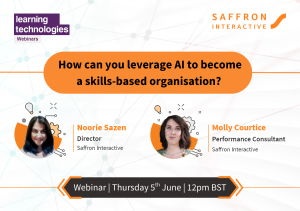Virtual reality (VR) has been talked about so frequently, both in and out of the learning industry that it seems to have lost its buzz. For a technology that would offer gamers, and now learners, the chance to experience a scenario first hand, the hype around it seems to have run itself into the ground.
This technological advancement offers exciting ways to change how learners interact with content. They can explore the virtual environment using body positions, hand gestures, facial expressions and even eye movements on a wide range of topics such as mental resilience, incident response, data protection, government policies and more. There is also possibility for a virtual instructor to guide the learner through the course, enabling a completely immersive experience by offering physical directions, advice and personalised feedback.
Research dating back to the 1930’s shows that keeping the learning context the same between encoding and retrieval, meant more content was remembered. Virtual reality offers a learning atmosphere where visuals, audio and engagement reflect the reality of a situation, allowing for a more authentic practice and embedded learning.
VR Learners will also be able to safely practice scenarios based on real environments and emergency situations, without incurring the expense or safety risk of actually doing the exercise or resorting to physical simulators. This opens up the door to creativity, innovation, engagement and success! In theory, this offers a huge opportunity in the field of learning. The best way to learn a new skill really is to try it and practice. In the past, it would be very difficult to learn how to rock climb from the comfort of your own chair. Now you have the chance to explore the mountains of North America and the foothills of Europe from your own living room, and the only hazard you have to worry about is spilling your tea!
To give a large group of learners a direct experience in something could be costly, time consuming and difficult to facilitate. Using the above example, to transport a group of people to a destination, and to provide the gear, necessary tools and in most cases a trainer, would not be feasible. Virtual learning offers every learner the chance to practice their skills in the most authentic way, quickly ensuring that they have the best scenario-based training and the learning objectives are met.
In 2009 we developed a course on ‘Keeping safe on flat roofs’ which used 3D graphics and video to allow learners to explore the rooftop area and identify hazards. Although successful at the time, with the help of virtual reality, the learner could have physically explored the roof, felt the same sensations, and experienced all of the safety procedures first hand in the context in which it matters. Particularly in the case of safety training, virtual reality allows a learner to become practiced and skilled before being introduced into a potentially dangerous situation.
German transport company Deutsche Bahn has already seen potential in this and introduced virtual reality into their recruitment process. Applicants are given the chance to explore a range of roles including electricians and train drivers. Although designed to attract millennials and school leavers, Kerstin Wagner, head of talent acquisition, believes that it will help current employees to realise the future of their workplace. With high profile companies such as Deutsche Bahn taking on this hot topic, it looks like VR might have some staying power, after all.
Here are some examples of the exciting things that can be created using virtual reality:
- A 4D, motion-tracked, multi-sensory experience that created a trek like no other.
- Remote instruction, 3D computer aided design, gamification, expanding possibilities for education and more using Microsoft HoloLens.
- Extreme free solo rock climbing on Oculus Rift.
- Never before gaming experience in Sony Morpheus.
In the future, there is potential for every learner to have their own personalised, immersive learning system which will visually appear in front of you, work using your voice commands, and take you through amazing learning experiences. It will also be able to keep track of your scores and learning and give you insightful data on your biases and behaviours. In short, we could all have smarter, more interactive technology working with us.
If you’d like to discuss the possibilities for your next VRlearning project get in touch, and please don’t hesitate to let us know what you think in the discussion box below.




